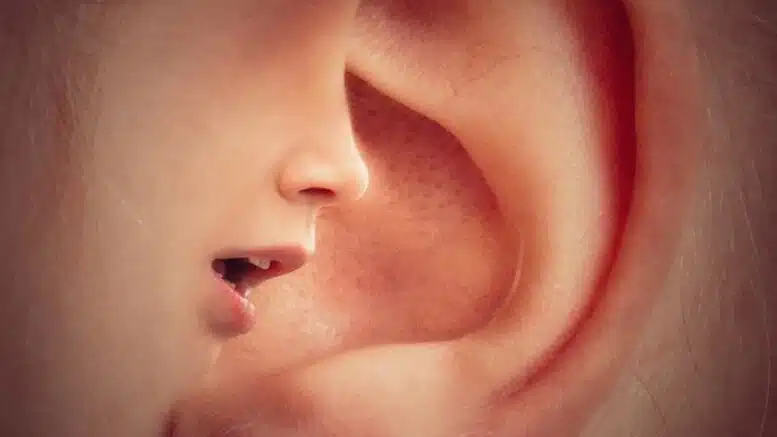We communicate with our family and everyone we cross paths with every day. Therefore, our ability to hear is essential since it allows us to receive messages to respond and remain connected to the world. Hence, we should take care of our ears to preserve our relationships with other people.
However, many factors contribute to a hearing problem. Of course, it could be either congenital or acquired. But, unfortunately, many have overlooked things that can cause hearing issues because they’re routinely exposed to a specific environment, such as our very own workplace.
Controlling Noise in the Workplace
Workers are constantly exposed to noise in specific fields like entertainment, industrial, agriculture, transportation, mining and quarrying, metalwork, woodwork, and construction.
If employees constantly raise their voices to have a normal conversation, the noise in the workplace might be hazardous to the ears. If this is the case, employers in high-risk industries should take noise-control measures.
Elimination
Elimination is the most effective measure to mitigate risks to workers. It’s the process of determining the noise source and completely getting rid of it. Before purchasing new machinery, employers should examine the noise levels. This can be done by consulting the machinery’s supplier.
Substitution
If complete elimination is not possible, replacing noisy machinery or equipment with quieter alternatives may be the next best option to protect workers from hearing damage.

Engineering controls
Engineering controls keep workers safe by removing risky conditions or constructing a barrier between them and the hazard. It entails modifying operations and equipment to reduce noise levels in the workplace. Filters, barriers, and enclosures are few interventions that can help decrease risks in a noisy workplace.
Administrative Controls
Administrative controls are the approaches used to organize work to decrease the number of workers exposed to noise or the amount of time they are vulnerable to it. Administrative controls should be executed when it is not practicable to curb noise exposure by elimination, substitution, or engineering noise control techniques.
Personal Protective Equipment
Hearing protection and taking care of your ears are essential to avoid ear infections and even noise-induced hearing loss. For the former, there exist different types of treatment for ear infections, which can be easily purchased in pharmacies and even online. Antibiotics like amoxicillin, ciprofloxacin, neomycin, and ofloxacin will be prescribed by a doctor based on the type of infection.
On the other hand, hearing loss can be permanent. Hence, hearing protection devices are important. They can help by minimizing the amount of noise that reaches the inner ear.
The most prevalent types of PPE are earmuffs and earplugs. All hearing protection should be capable of lowering noise exposure to safe levels, and it should be readily available to workers.
Early Signs of Potentially Serious Hearing Problems
There are specific symptoms of more severe hearing issues caused by exposure to excessive noise in the workplace. These symptoms can be managed easily at first but can go worse if ignored.
Ringing in the ears
The ringing in your ears is called tinnitus. It is a condition in which you hear ringing or other sounds in one or both ears. When you have tinnitus, the noise you hear isn’t created by external sounds, and you’re the only one hearing the ringing.
Symptoms usually disappear within 16 to 48 hours. However, It could take a week or two in extreme cases.
Hypersensitivity to certain sounds
Aging or exposure to loud noise is the most common cause of hypersensitivity to sounds. This condition is called hyperacusis. It is frequently linked to tinnitus or ringing in the ear. Although it is common for both ears to be affected, there are also instances where only one ear is damaged.

Muffled hearing
When sound waves are having trouble traveling through the inner ear, it may result in a muffled hearing. A variety of circumstances causes a muffled hearing. Some symptoms are mild and resolve quickly, while others demand medical intervention.
Asking others to repeat their words
Of course, when you’re not hearing someone’s words clearly, you’ll ask the person to repeat what they have said. It’s a strong indication that your ears are showing early signs of hearing loss.
Turning up the volume of audio devices
Some people who enjoy music would turn their device’s volume up. However, this is not the case for everybody. People experiencing early signs of severe hearing problems would want to maximize the volume of any sound they want to hear.
Have Your Ears Checked
When exposed to a noisy environment, your sensory cells may be harmed and even die. There is no method to revive these cells, and this could even result in long-term hearing loss.
Many might find ear check ups unnecessary, but it’s as essential as having your eyes checked. In the worst-case scenario, ignoring the need for a checkup can lead to further hearing issues or hearing loss.
Remember that checkups are essential if you participate in noisy activities or work in a noisy workplace.
Final Thoughts
Our sense of hearing allows us to enjoy communicating with other people. Our quality of life partly depends on our ability to hear. We should never take it for granted to continue to connect to the world while we are alive.
